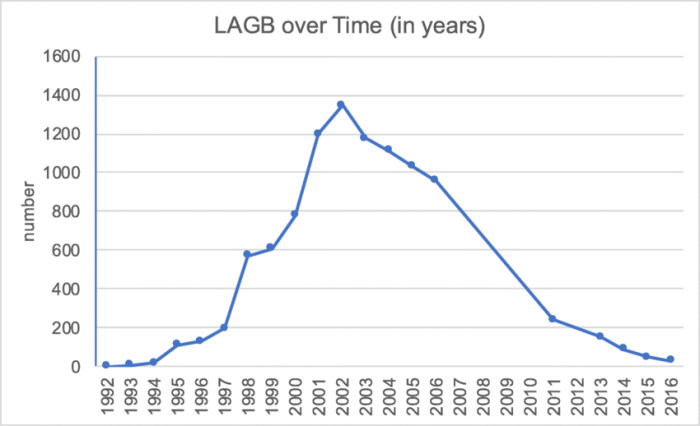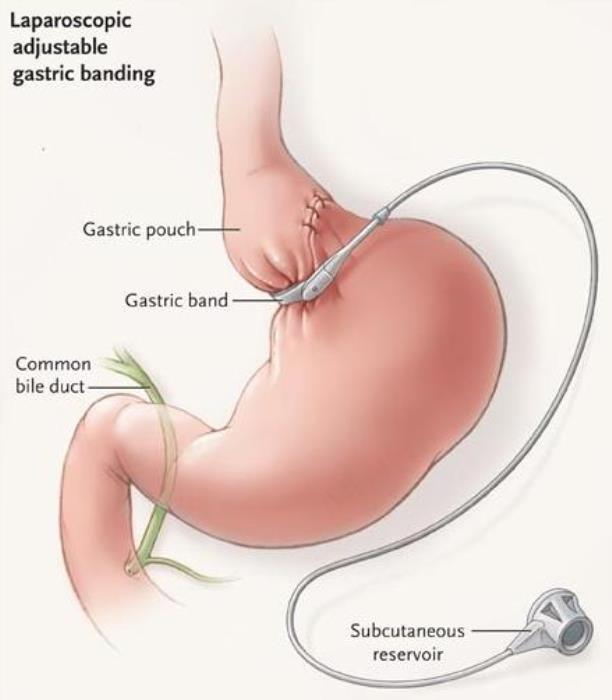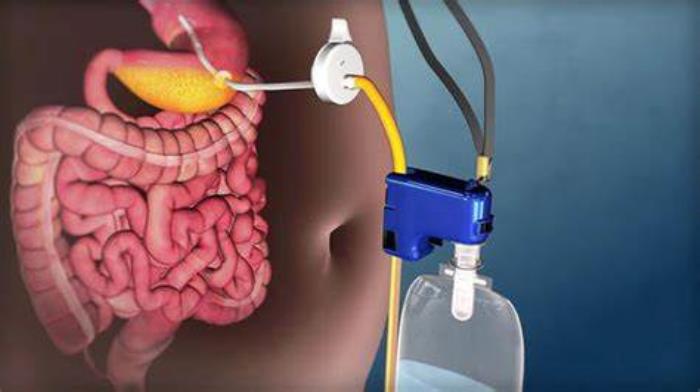Weight loss surgery has evolved significantly over the years, with advancements in technology and surgical techniques providing safer and more effective options for individuals struggling with obesity. Initially, bariatric surgeries were more invasive and carried higher risks, but the development of minimally invasive procedures like Laparoscopic Adjustable Gastric Banding (LAGB) has transformed the landscape of weight loss surgery. These innovations have not only improved patient outcomes but also made surgical intervention more accessible to those in need.
The focus has shifted from just achieving weight loss to enhancing overall health and quality of life through tailored surgical solutions.
Overview of Laparoscopic Adjustable Gastric Banding (LAGB)
Laparoscopic Adjustable Gastric Banding (LAGB) is a weight loss surgery that involves placing an adjustable silicone band around the upper portion of the stomach to create a small pouch. This reduces the stomach's capacity, allowing patients to feel full after consuming smaller meals. The band is adjustable, which allows for personalized regulation of food intake based on individual progress, and it can be tightened or loosened through a port under the skin.
LAGB is favored for its minimally invasive nature, shorter recovery time, and lower complication rate compared to other bariatric surgeries. It has become a popular choice for individuals seeking a reversible and adjustable weight loss solution.
How LAGB Has Changed Over the Years
Over the years, LAGB has undergone several refinements to improve safety, comfort, and effectiveness. Early versions of the procedure were less sophisticated, with fewer customization options for band tightness and adjustment. However, improvements in surgical techniques have led to faster recovery times and fewer complications, making the procedure more appealing.

Adjustments to the band are now more precise, and advancements in patient monitoring have improved post-operative care. These changes have made LAGB a more effective tool for weight management, with better long-term results and patient satisfaction.
Advancements in LAGB Materials and Design
Modern gastric bands are made from improved materials that enhance comfort and durability. Earlier versions of gastric bands were bulkier and could sometimes cause discomfort or complications. Today’s bands are made from biocompatible silicone, which is more flexible and comfortable for patients, reducing the risk of erosion and slippage.
The design of the adjustable port has also improved, allowing for more seamless adjustments to band tightness, enabling personalized weight loss strategies based on patient progress. These innovations ensure that the gastric band is both safe and effective over the long term.
Smart Gastric Bands: The Future of Personalized Adjustments
The future of LAGB surgery may lie in the development of smart gastric bands, which incorporate advanced technology to automatically adjust band tightness based on real-time data. These bands could potentially monitor stomach activity, nutrient intake, and patient weight, allowing for automatic or remote adjustments without the need for frequent clinical visits.

Smart bands would offer a more personalized approach to weight loss, ensuring that the band is always optimally adjusted to suit the patient’s current needs. This innovative technology has the potential to revolutionize bariatric surgery by offering more convenience and precise weight management solutions.
Non-Invasive Adjustments: Remote-Controlled LAGB Systems
Remote-controlled LAGB systems are an emerging innovation that allows adjustments to be made without the need for invasive procedures. These systems use a wireless device to tighten or loosen the gastric band, offering patients greater convenience and comfort. Remote adjustments can be made in response to a patient’s needs, such as changes in appetite or weight loss progress, providing a personalized approach to treatment. This technology also reduces the need for frequent clinical visits, making the management of the gastric band more efficient and less disruptive to daily life.
Improved Techniques for LAGB Placement: Minimizing Risks
Advances in surgical techniques for LAGB placement are focused on reducing risks and improving patient outcomes. Surgeons now use more precise methods, such as laparoscopic approaches, which minimize incisions, reduce recovery time, and lower the risk of infection. These refined techniques also help to reduce complications such as band slippage, erosion, or improper placement, ensuring that patients experience fewer post-operative issues. By continually refining these methods, the safety and success rate of LAGB surgery continue to improve.

Combining LAGB with Other Weight Loss Technologies
In some cases, LAGB can be combined with other weight loss technologies, such as gastric balloons or pharmacological treatments, to enhance weight loss outcomes. These combinations are particularly effective for patients who need additional assistance in achieving significant weight loss or addressing specific metabolic conditions. By integrating multiple approaches, healthcare providers can create a tailored treatment plan that optimizes weight loss while minimizing the need for more invasive procedures.
The Role of Artificial Intelligence in Monitoring and Adjusting LAGB
Artificial Intelligence (AI) is becoming increasingly useful in the ongoing management of LAGB systems. AI-powered platforms can analyze data from wearable devices and other monitoring tools to assess a patient’s progress and automatically recommend or initiate adjustments to the gastric band. This real-time monitoring allows for more accurate and timely changes to the band’s tightness, ensuring better appetite control and weight loss. AI also helps in predicting complications, providing a proactive approach to patient care.

3D Imaging and Virtual Planning for Precision in LAGB Surgery
3D imaging technology is revolutionizing LAGB surgery by enabling surgeons to create detailed virtual models of a patient’s anatomy. This allows for more precise placement of the gastric band, tailored to the individual’s unique physiology. Virtual planning can improve the accuracy of the procedure, reduce operating times, and lower the likelihood of complications. By using 3D imaging, surgeons can also better visualize and predict outcomes, improving the overall success of the surgery.
Enhanced Patient Monitoring: Wearable Tech for Post-Op Care
Wearable technology is playing an essential role in monitoring patients after LAGB surgery. Devices that track vital signs, physical activity, and even eating habits provide healthcare providers with valuable data to assess a patient’s recovery and weight loss progress. This continuous monitoring helps to detect early signs of complications, such as dehydration or inadequate weight loss, allowing for timely interventions. Wearable tech offers a convenient way to ensure that patients are following post-operative guidelines and achieving their health goals.
Biodegradable Bands: A Glimpse into the Future
Biodegradable gastric bands represent a promising innovation in LAGB technology. These bands are designed to degrade naturally over time, eliminating the need for removal surgery and reducing long-term complications. While still in the experimental stages, biodegradable bands could offer patients a less permanent solution that still provides the benefits of adjustable gastric bands. This advancement could make LAGB an even more appealing option for individuals seeking non-permanent weight loss interventions.
How Innovations Are Reducing Complications and Side Effects
Ongoing innovations in LAGB technology are significantly reducing complications and side effects. New materials for the bands, improved surgical techniques, and advanced post-operative monitoring tools contribute to lower rates of band slippage, infection, and erosion. Additionally, better patient education and follow-up care are helping to prevent issues related to improper band use or dietary non-compliance. As these technologies continue to evolve, the risks associated with LAGB surgery are expected to decrease even further.
Exploring Faster Recovery Times with New LAGB Techniques
Improved surgical techniques and post-operative care protocols are leading to faster recovery times for LAGB patients. Minimally invasive laparoscopic methods, along with enhanced patient monitoring and personalized recovery plans, allow patients to resume their normal activities more quickly than with traditional surgery. These advances reduce hospital stays and minimize post-operative discomfort, making the entire process more manageable for patients seeking effective weight loss solutions.
Integration of Telemedicine for Post-Surgical Follow-Ups
Telemedicine is becoming an integral part of post-surgical care for LAGB patients. Virtual consultations allow for convenient follow-up visits, enabling healthcare providers to assess recovery, adjust the band if needed, and provide dietary guidance without the patient needing to visit the clinic in person. Telemedicine also improves access to care for patients in remote areas, ensuring that all individuals receive the necessary support throughout their weight loss journey. This approach is especially beneficial in maintaining long-term patient engagement and success.
New Research on LAGB Effectiveness and Long-Term Outcomes
Recent studies on the long-term effectiveness of LAGB (Laparoscopic Adjustable Gastric Band) have shown mixed results, with some patients achieving sustained weight loss while others face challenges such as band slippage or insufficient weight reduction. However, new research focuses on refining surgical techniques, improving post-surgical care, and developing personalized approaches to increase the success rate of LAGB. Ongoing studies are also evaluating how patient characteristics, such as pre-existing conditions and psychological factors, influence long-term outcomes, leading to more tailored and effective treatments.
The Role of Stem Cell Therapy in Enhancing LAGB Results
Stem cell therapy is gaining attention for its potential to improve the results of LAGB surgery. Early research suggests that stem cells may aid in faster healing post-surgery and reduce the risk of complications such as band erosion or tissue rejection. Stem cell-based treatments could also help in repairing damaged tissues and enhancing the body's ability to adapt to the gastric band, possibly leading to better weight loss outcomes. While still in experimental stages, this approach could become a promising complement to LAGB in the future.
Patient-Centered Care: Customizing LAGB for Individual Needs
The move toward patient-centered care in bariatric surgery is reshaping how LAGB is administered. Customization involves adjusting the gastric band more precisely based on individual factors like metabolism, body mass index (BMI), and eating habits. By continuously monitoring these variables, healthcare providers can tailor the band adjustments to maximize weight loss while minimizing side effects. This personalized approach ensures that patients receive the most effective treatment for their unique circumstances, improving both short-term and long-term outcomes.
The Future of Insurance Coverage for New LAGB Innovations
As new LAGB technologies and procedures emerge, insurance coverage for these innovations remains a critical consideration. While traditional LAGB surgeries are covered by many insurance plans, the inclusion of advanced features such as AI-assisted adjustments, remote-controlled systems, and stem cell therapies is still under discussion. As these technologies prove their effectiveness, insurance companies may begin offering broader coverage, potentially making LAGB and its advanced versions more accessible to a wider range of patients.
Conclusion: What the Future Holds for LAGB and Weight Loss Surgery
The future of LAGB surgery looks promising, with a wide range of technological advancements on the horizon. From AI-driven band adjustments to stem cell therapies, these innovations aim to improve patient outcomes, reduce recovery times, and minimize complications. Non-invasive alternatives and biodegradable gastric bands also offer exciting possibilities for weight loss surgery. As research continues, LAGB will likely evolve into an even safer and more effective option for patients seeking long-term weight management solutions.
How Does the Gastric Band Work?
Understand the mechanics behind the gastric band and how it helps patients achieve weight loss by limiting food intake. This section explains how the adjustable band works to create a smaller stomach pouch, helping patients feel full more quickly and effectively manage their calorie intake.
Best LAGB Surgery in India
The Best LAGB Surgery in India helps patients manage obesity by placing an adjustable band around the stomach, limiting food intake and promoting gradual weight loss.
Best LAGB Hospitals in India
The Best LAGB Hospitals in India offer top-notch facilities with experienced surgical teams, providing personalized care and support throughout the patient's weight loss journey.
LAGB Surgery Cost in India
The LAGB Surgery Cost in India is affordable, offering transparent pricing and accessible treatment options while maintaining high standards of care at leading hospitals.
Best LAGB Surgeons in India
The Best LAGB Surgeons in India are highly skilled and experienced, ensuring precise surgical techniques and personalized care for optimal weight loss outcomes.
FAQ
What new technologies are being developed for gastric bands?
New technologies include AI-assisted adjustments, remote-controlled gastric bands, and biodegradable bands designed to minimize long-term complications and improve patient convenience.
How does AI help in adjusting gastric bands?
AI monitors patient data, such as eating habits and weight changes, and suggests or automatically makes adjustments to the band to optimize weight loss and appetite control.
What are smart gastric bands, and how do they work?
Smart gastric bands are equipped with sensors and remote control capabilities, allowing for non-invasive adjustments based on real-time data, making the weight loss process more personalized.
Will recovery times decrease with new LAGB innovations?
Yes, innovations in surgical techniques, post-operative monitoring, and non-invasive technologies are expected to reduce recovery times and improve the overall patient experience.
Are there any non-invasive alternatives being developed for LAGB?
Yes, research is underway on non-invasive weight loss alternatives, such as advanced gastric balloons and pharmacological treatments, which may offer similar benefits to LAGB without the need for surgery.
Related Resources
At ArogyaJivan, we strive to provide you with the most accurate and up-to-date information to help you make informed decisions about your healthcare. Whether you are searching for the Best Doctors in India or the Top 5 Doctors in India, our resources are tailored to guide you through your medical journey. Additionally, our comprehensive guides on the Best Hospitals in India and the Top 5 Hospitals in India will assist you in choosing the right healthcare facility for your needs. Explore these resources to ensure you receive the best possible care.